THIS MEAGRE NATURE – ROMANTICISM VS BEAUTY
March 19th, 2009 admin“These poor villages,
This meagre nature,
Long-suffering land,
Land of the Russian people!”
– Fedor Tiutchev
“The artist should not only paint what he sees before him, but also what he sees within him.
If, however, he sees nothing within him, then he should also omit to paint that which he sees before him.â€
– Caspar David Friedrich, quoted in Romanticism and Art.
The theme of Romanticism has come up several times in the past couple of months; I was recently interviewed by photographer Wendy Pye who was researching her MA dissertation on the links between Romanticism and its influence on twenty first century photography, while a couple of blogs have commented on my work with reference to beauty (see American Suburb X and Ben Huff’s blog). Regular readers of the blog will also have spotted references in my post about Peter Bialobrzeski’s book Heimat – note the obvious reference to Friedrich’s Monk by the Sea and Bialobrzeski’s photograph Heimat 34.
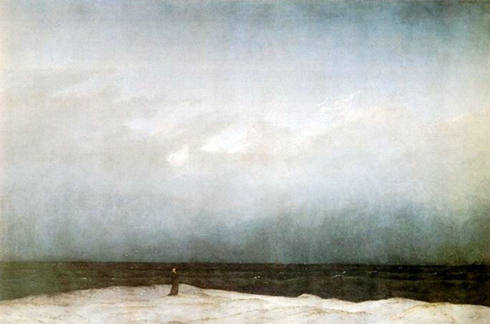
Monk by the Sea, Caspar David Friedrich (1809-10)
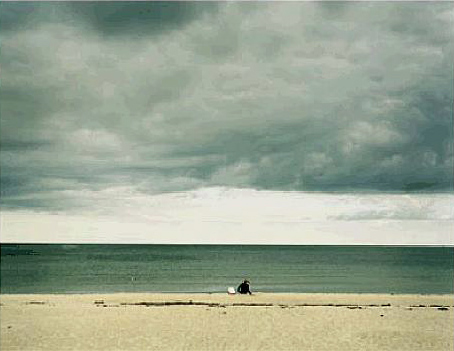
Heimat 34 © Peter Bialobrzeski (2002)
Romanticism is an artistic, literary, and intellectual movement that originated in the second half of the 18th century in Western Europe. The movement stressed strong emotion as a course of aesthetic experience, placing new emphasis on such emotions as trepidation, horror and awe, especially that which is experienced in confronting the sublimity of untamed nature and its picturesque qualities. It was Romantic artists who first asserted the supreme importance of landscape – prior to that it had been subordinate to historical paintings (Titian or Poussin’s principal theme had been nature not man). While the great 17th Dutch painters had been engrossed in the simple depiction of a locality, known as naturalism, it was in Scandanavia (notably in Copenhagen) and Germany that attempts were first made to infuse landscape painting with a sense of the spiritual. Interestingly, the movement took root around the same time as the invention of photography.
While Romanticism can tip easily into parody and melodrama, at its finest, romantic art is overwhelming, beautiful and uplifting. Just think of paintings by JMW Turner, such as this one-
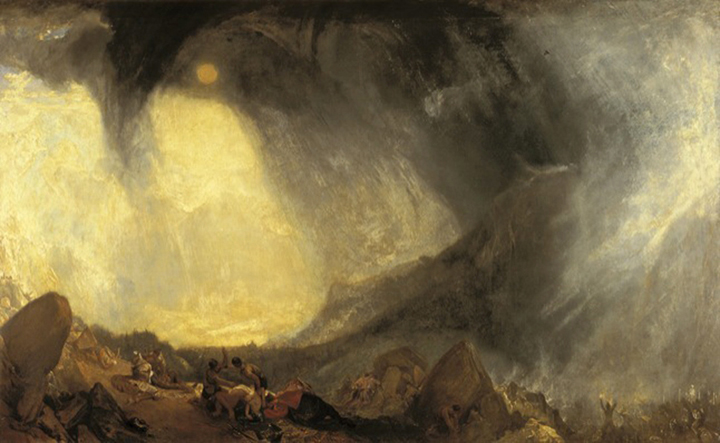
Snow Storm: Hannibal and his army crossing the Alps, JMW Turner (1812)
Writing in the catalogue which accompanied the exhibition Damaged Romanticism, A Mirror of Modern Emotion at The Art Museum of the University of Houston USA (September 2008), Terrie Sultan asserts that “photographers are taking up the Romantic spirit, querying their ability to portray an objective truth and wanting to create images that are open to the interpretation of the viewer.” And Pye notes how several landscape, pictorial and documentary photographers (for example, Nicholas Hughes, Ori Gersht and Elina Brotherus) have adopted romantic styles in some of their work.
In relation to my own work, I certainly wouldn’t deny that I’m an emotive photographer whose images include romantic (with a small r) overtones – elements of intuition, imagination and feeling. To be precise, I would say that I’m more interested in notions of beauty, and what constitutes beauty, rather than specifically applying motifs in my photographs that are linked to Romanticism. Of course, admitting such can be dangerous to your career! Producing romantic, or at least beautiful imagery, is often viewed as profoundly uncool and nostalgic rather than contemporary.
The trouble with beauty is that tastes and standards of what is beautiful vary so much. Take Russia, for instance. In the early 1800s, Russians commonly accepted the European judgement that their land lacked aesthetic value (as a result, Russian landscape painters tended to travel to Italy, where they learnt to capture the brilliant light, or study at the academies of Germany and France). This view of the Russian landscape changed with the outpouring of literary and artistic creativity that followed the century’s political upheavel and artists turned to their native land and revealed the power of gray skies, vast open fields, and simple birch forests.
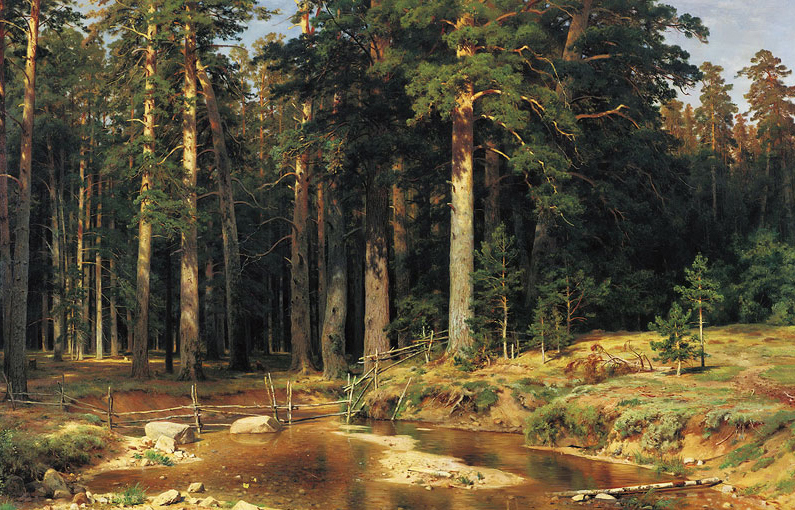
Mast-Tree Grove, Ivan Ivanovich Shishkin (1898)
In 19th century Russia there was move towards greater naturalism with artists enhancing the idea of Russian beauty and grandeur. The movement was led by artists like Ivan Ivanovich Shishkin (1832-1898) who was famous for his scrupulously detailed canvases depicting the Russian countryside, its impenetrable forests and enormous skies; artists like Arkhip Ivanovich Kuindzhi (pronounced Quind-gee, 1842-1910) whose paintings are characterised by their panoramic sweep, the simplification and stylisation of natural forms; and Isaak Ilich Levitan (1860-1900), who painted ‘mood landscapes’, in which he established an overall atmospheric unity.
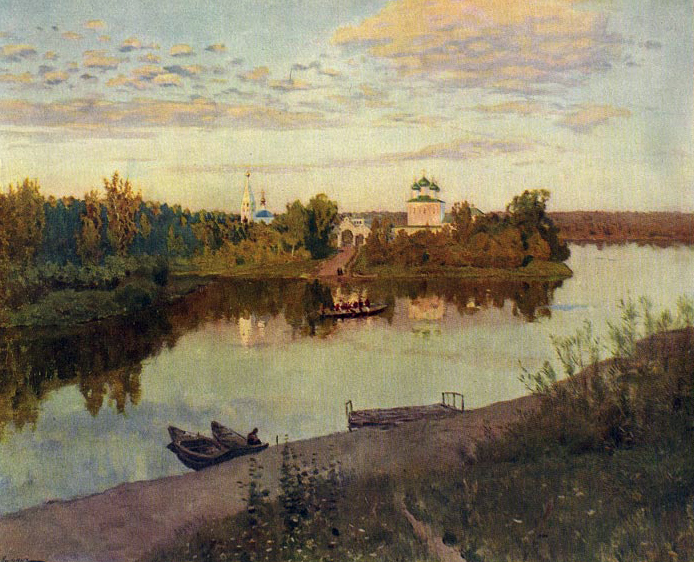
Evening Chime, Isaac Ilyich Levitan (1892)
As Christopher Ely argues in his book This Meager Nature: Landscape and National Identity in Imperial Russia (Northern Illinois University Press, 2002)-
“The articulation of a specifically Russian landscape in art and literature contributed to the construction of Russian national identity. This process entailed learning both to view Russia without European aesthetic filters and to love the very features of Russian land and nature that seemed impoverished by comparison with European landscape conventions. ‘Proud foreign eyes’, so important in the late eighteenth-century approaches to Russian landscape imagery, would cease to hold authority by the end of the nineteenth. At the turn of the twentieth century, Russia’s ‘meager nature’ and ‘humble barrenness’ were no longer dull and tedious for Russian viewers, but highly valued, even a ‘blessing’. The meagre, humble, barren and suffering land gave birth to the special strengths, endurance, and soul of the ‘Russian people’. ‘This meager nature’ thus became a font of national celebration. Russian’s came to embrace their land’s modest beauty.”
(On this point, it’s worth noting that one of Romanticism’s key ideas and most enduring legacies is the assertion of nationalism, which became a central theme of Romantic art and political philosophy).
In my approach for Motherland, I was making a deliberate attempt not to produce clichéd representations of a Russia ground down by poverty and despair. Russia was not exoticised, but my gaze certainly attempted to explore this notion of Russia’s “modest beauty”:
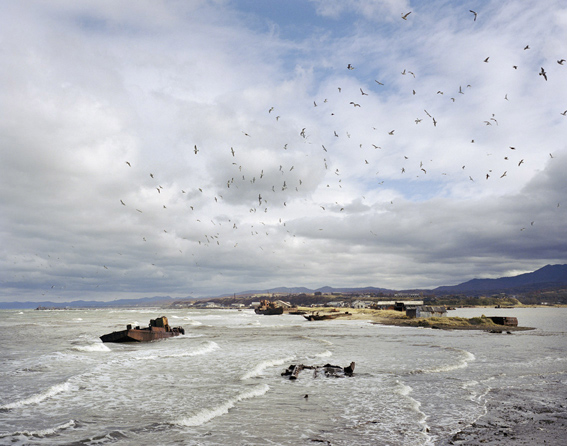
Alexandrovsk Port, Sakhalin Island © Simon Roberts (2004)

Golden Horn Bay, Vladivostok © Simon Roberts (2004)

Woodland, Zheleznogorsk © Simon Roberts (2005)

Apartment blocks reflected in water, Okha, Sakhalin © Simon Roberts, 2004
In relation to We English, which was partly inspired by both Turner and another Romantic British artist, Constable, the work is no doubt rooted in the consciousness of my own attachment to England and is at times an unashamedly lyrical rendering of every day landscapes.


March 19th, 2009 at 7:02 pm
By the way, great post. I’m obsessed with romanticism, so it’s nice to hear other people talking about it. About this:
“Terrie Sultan asserts that ‘photographers are taking up the Romantic spirit, querying their ability to portray an objective truth and wanting to create images that are open to the interpretation of the viewer.’â€
Unfortunately, I think Sultan reduces a much more complex relationship with romanticist notions to the default in contemporary photography – ambiguity. Whereas ambiguity often creates the necessary distance an artist lacking confidence requires, making work with romanticist influence, when successful, is more poignant.
November 24th, 2009 at 1:17 am
Completely unrelated to a very interesting post that actually got me reading even though I was only looking for photos.
Would you mind re-licensing the low resolution images on this page of Alexandrovsk and Okha under the Creative Commons attribution 3.0 license? I’m trying to build up a travel guide for the island, and having only visited the south I’m kinda desperate for photo’s of those two cities, and these fantastic images would certainly be a boost – I’m thinking something similar to what we did here:
> http://wikitravel.org/shared/Image:Sakhalin-from-air.jpg#Licensing
Where only a low resolution, inadequate for good prints, is openly licensed, and copyright is retained should a sneaky user find a high-res version elsewhere.
You can see the current state of the guide here:
> http://wikitravel.org/en/Sakhalin
Your contact link on this page seems broken by the way.
Kind regards
– Stefan, Wikitravel.org